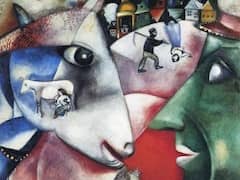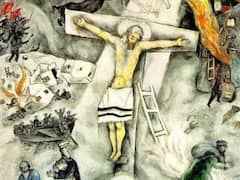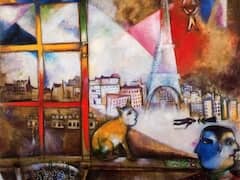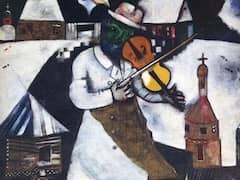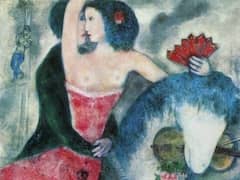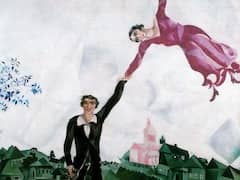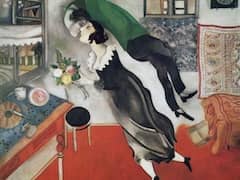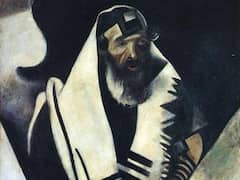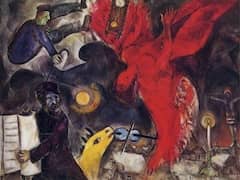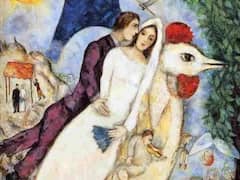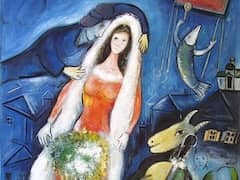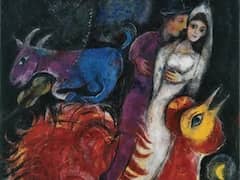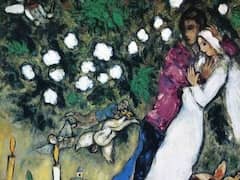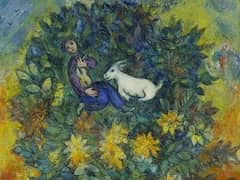The Drunkard, 1912 by Marc Chagall

The Drunkard was painted a few months before the completion of I and the Village. It was among the first paintings Chagall exhibited at the Paris Salon des Independants, which opened on March 20, 1912. So, presumably, it was made at the turn of 1911-12, and this agrees with the date Chagall has given it.
It was preceded by a small gouache, made while Chagall was working on a series of interiors showing a single figure near a table - small sketches in which the tranquillity of the room forms an emotional contrast to the uneasy agitation of the human figure. This gouache shows a comparatively realistic view of an interior with a table and two chairs, with the drinker on the right-hand side. Chagall's strange invention of the detached head trying to reach the floating bottle is already to be found here. On the table are playing cards, a bowl of fruit, and a herring. A window in the back wall looks out on a country scene, and a cow is stretching her head through the window. The variety of detail in the description of the room gives the picture a certain anecdotal character.
In the oil version shown here, however, the anecdotal features have been largely blotted out. The interior view with back wall, window, and peering cow has given way to an abstract plane structured by a pattern of large rhomboids. The inventory of objects has been reduced to a few stylized items which lie flattened on the plane, although retaining their characteristic contours. The reversed perspective of the table also fits into the surface ornamentation. The whole canvas, with its ornamental arrangement and slightly agitated spatial construction, is lit up by a magic color-light which streams out of the entire surface area. It derives its power from the fundamental contrasts of blue and yellow, and of red and green, which are accompanied by a profusion of passages of colors neighboring each other in the spectrum: from yellow through orange to red, from orange to green-yellow, and from red-violet to blue. These graduations of color interact to generate the unreal light. Once more, as in / and the Village, the radiant, ornamental, independent surface area becomes the field for the various details. The Drunkard contains the same construction of the evocative surface as the mirror of the psychically experienced and poetically enhanced reality which was carried through to perfection in I and the Village.

